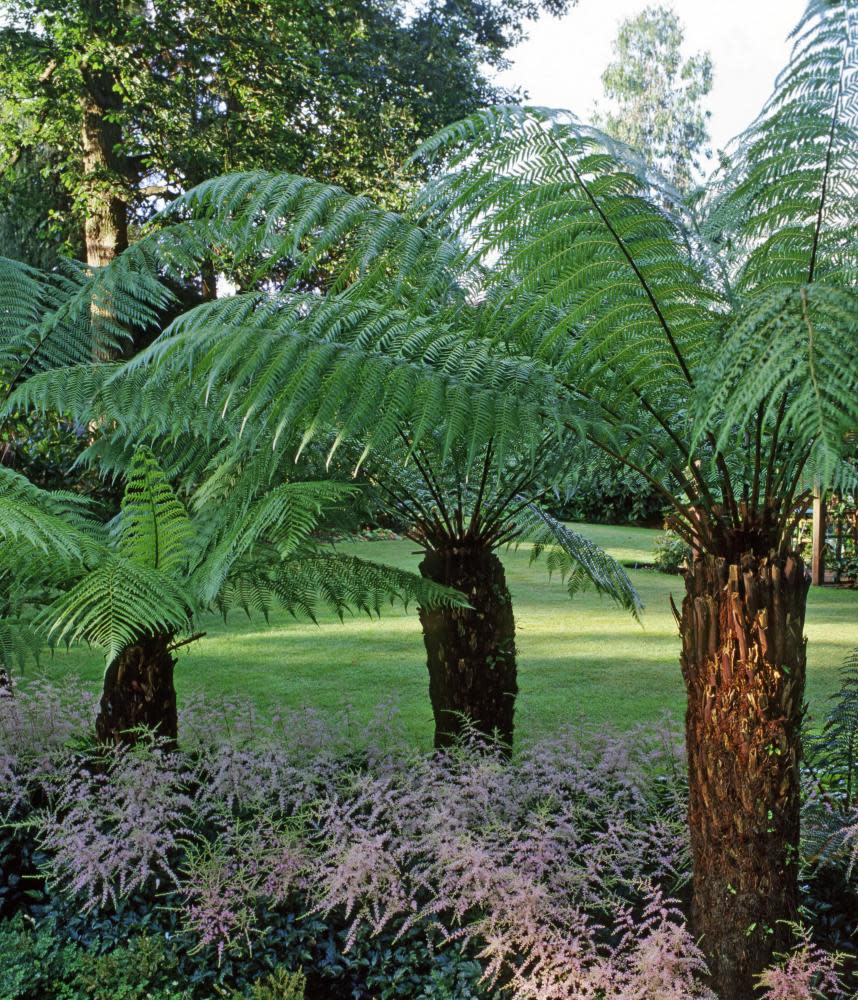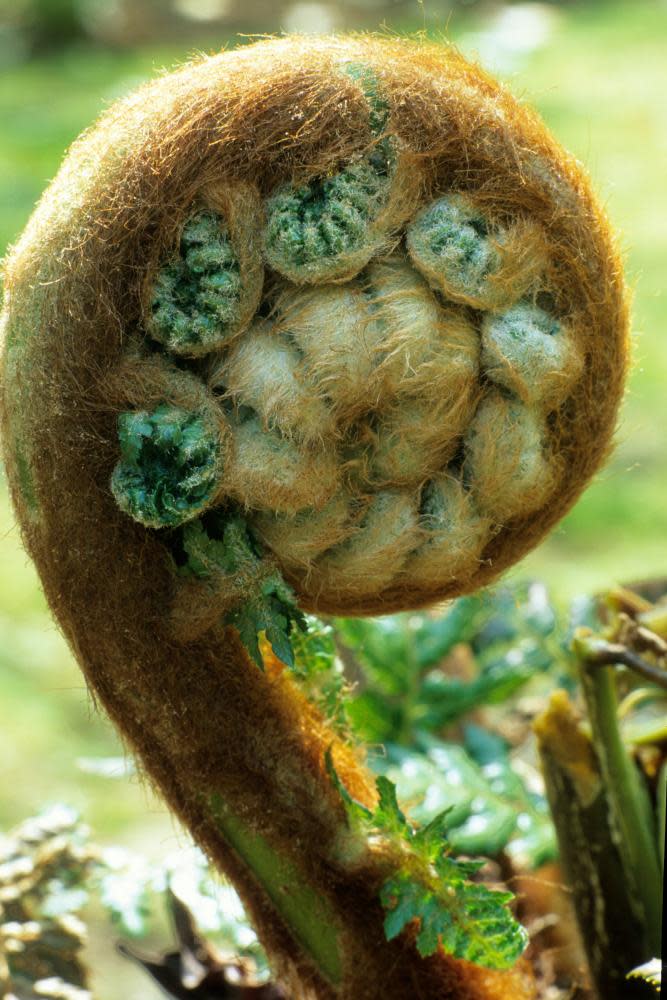Gentle giants: fall for exotic tree ferns

With thick, fuzzy trunks topped by a headdress of imposing fronds, these giants of the fern family are showstoppers. “When you see them, you think, wow,” says designer Todd Longstaffe-Gowan, who has been using them in his gardens for more than 30 years. But it is their ability to make a statuesque feature in the smallest of spaces that has cemented the tree fern’s recent popularity, he says. “When you’ve got a dark area where little else will grow, few plants perform so well.”
Among the tree ferns available in the UK, the most popular is Dicksonia antarctica. Its huge trunks, which arrived on our shores in the 1840s and 50s, were transported from their native Australia to be planted in Britain’s grand gardens by well-heeled Victorian gardeners. The plant’s main asset is its hardiness: it can cope with temperatures as cold as -5C, which means it will survive the average British winter with the help of some insulation around the crown. They can grow to 15m (49ft) in their native south-eastern Australia. Others, such as the black tree fern (Cyathea medullaris), may thrive outside in a sheltered garden in Cornwall or in the heat island of central London, but would struggle elsewhere in the event of a harsh UK winter.

D. antarctica provided an elegant solution to a problematic space Longstaffe-Gowan designed at the Royal College of Art in London. “We were confronted with a dark, enclosed courtyard, protected from the wind. There were two giant London plane trees and they had tried everything, but nothing – not even grass – would grow,” he says. The solution was a “forest” of dozens of tree ferns featuring D. antarctica, as well as the less hardy but no less beautiful Cyathea cooperi.
It’s possible to create a mini fernery at home. Tree ferns are widely available from specialist suppliers and some garden centres. For instant impact, the usual choice is a specimen 60cm (2ft) tall or more: a D. antarctica costs about £45-£50 per foot of trunk. Combine a tree fern or three with an underplanting of bold-leaved foliage of a different shape, such as grey-blue hostas. To draw the eye away from a bare or wrapped tree fern in winter, choose an evergreen planting partner such as the glossy foliage of the false castor oil plant (Fatsia japonica).

It’s vital that you check the provenance of your dicksonia, and buy only from a reputable supplier. Australian tree ferns are usually taken from renewable managed plantations of either eucalyptus or hardwoods, where they grow as an understorey layer, explains Guy Watts, managing director of Architectural Plants. Correctly imported ferns should carry a label indicating their provenance and that they have been harvested in accordance with local regulations.
If you’re not happy with the transport miles involved in importing a tree fern, there is an alternative. All ferns – whether the red azolla (Azolla filiculoides), which is no bigger than your fingernail, or the metres-tall dicksonias and cyatheas – grow from minuscule spores.
Neil Alcock runs the trade-only Seiont Nurseries in Gwynedd, producing 200,000 ferns a year, all grown from spores. It takes 14 months to go from spore to 9cm (3.5in) plant; after two years, spore-grown tree ferns sport fronds 60-70cm (2ft) long.
Plantsman Robbie Blackhall-Miles is raising spore-grown tree ferns in his north Wales garden. “A tree fern grown from a spore grows far more quickly than one brought from the wild. When I planted my tree ferns, the trunk was nonexistent: eight years on, they have a 2ft trunk.”
Related: ‘One of us did have a little cry’: what this year's Chelsea stars did instead
So if you want to grow these, you have to be in it for the long haul. Plant a young tree fern today and in 250 years’ time, your descendants may still be enjoying its shade.
Tree fern care tips
• Ensure the trunk gets sufficient moisture by pouring water directly on to the crown at the top of the trunk during the growing season.
• Choose a sheltered spot, as drying winds are a frequent cause of tree fern death; they enjoy partial shade.
• If you live too far north for a tree fern to survive winter unscathed, plant one in a pot that can be moved indoors to overwinter.
• Insulate the crown in winter. Kew horticulturist Scott Taylor suggests tying fronds together with string and placing dry hay around the centre of the leaves.


